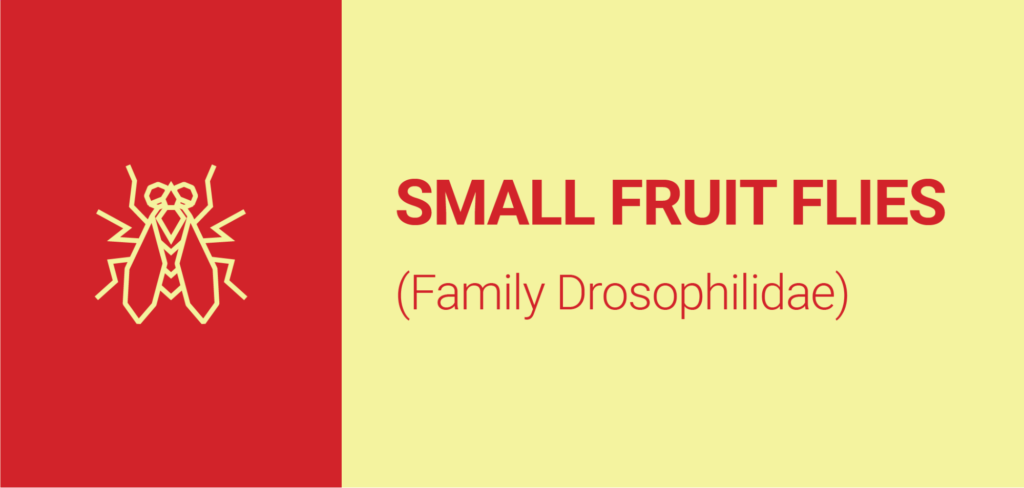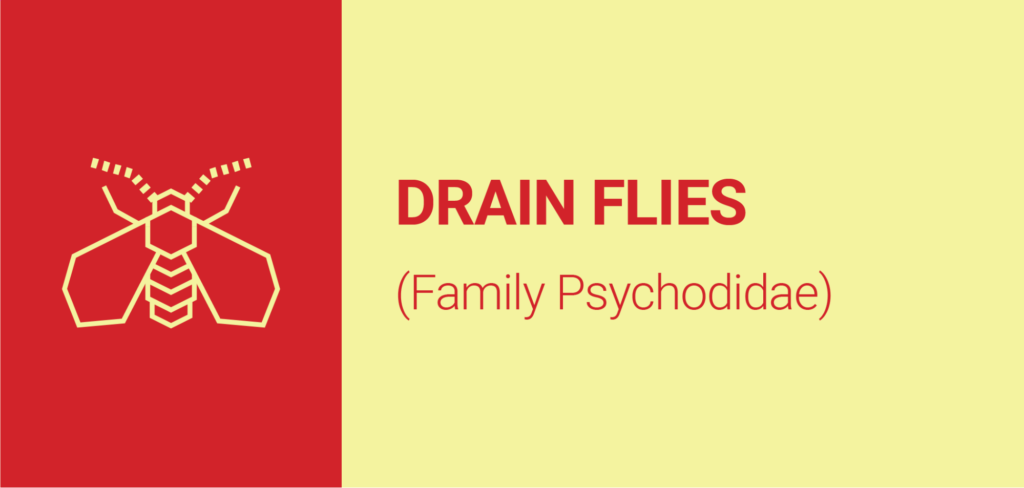by David Moore
Manager of Technical Services and Board Certified Entomologist
with contributions by Eric Smith, PhD, BCE
Flies can usually be separated into two major groups, large and small. Larger flies (also known as filth flies) are typically about 1/8-3/8″ long. They breed outdoors and can come into the home (i.e. the housefly). Small flies exist in a variety of types, which includes gnats. They are common pests in the home, and are often problematic in commercial areas like offices, restaurants, food processing plants and grocery stores.
Why Flies Are A Problem
The presence of flies is definitely a nuisance, and for more reasons than just their buzzing and flying around. All flies breed in some form of decaying organic matter, and they therefore may carry disease-causing pathogens and can affect human health and food safety. They’re also a health risk because:
- Many breed in unsanitary conditions and may spread disease through simply landing on various surfaces.
- Some, once they are dead, can trigger asthma due to the accidental inhalation of their broken body parts.
- Many breed, hatch and grow rapidly and can create an infestation in as little as eight days.
Flies and gnats don’t just breed outdoors, however. They can also easily breed indoors and cause unsanitary conditions. Finding and eliminating the source of their food and breeding is imperative to ending an infestation.
Correct Identification
Knowing which kind of small fly or gnat that you have in your home will help you determine where they are coming from. Each has a preferred feeding and breeding place. But their flight habits and/or breeding sites will also hint at the kind of fly that’s infesting your home.
Small flies have one pair of wings and belong to the insect order Diptera, and they grow through a complete metamorphosis from egg to larva to pupa to adult. They come from three specific families of insect
Small Fruit Flies (Family Drosophilidae)

Also known as vinegar or drosophila flies, these flies get their common name from their tendency to lay eggs in decaying fruit, as the fermenting sugars provide their food. They also tend to grow in the liquids of improperly sealed containers of fruits and vegetables.
Some of their characteristics include:
- Size: About 1/8″ (3 mm) long. Many are small enough to be able to penetrate regular mesh screening.
- Color: Tan to brownish yellow or brownish black. Eyes usually red.
- Antennae: Short and bristly
- Flight: Hovers in small circles
- Eggs: Females lay about 500 eggs at a time
- Life Cycle and Favored Areas: Complete growth to adulthood in about 8-10 days. This means that they can also lay eggs in temporary sites like dirty dishcloths, mop heads, fruit bowls and buckets of stagnant water. They can also be found in garbage and recycling bins, refrigerators, compost piles, discarded dishes and bottles and in spilled liquid. Any place where yeast and fermentation are present, fruit flies may find a breeding site.
Drain Flies (Family Psychodidae)

Also known as moth, filter and sewer flies, these flies get their name from their hairy, fuzzy appearances and their tendency to develop in pipes, sewers and drain areas where stagnant and dirty water is present.
Some of their characteristics include:
- Size: 1/16-3/16” (1.5-5 mm) long. These flies are also often able to get through regular door and window screening.
- Color: Pale yellowish to brownish gray to blackish
- Antennae: About half the body length, beadlike
- Wings: Broadly oval and hairy
- Flight: Short hops, or hovering above drains, but rather weak in extended flight
- Eggs: Females lay 30-100 eggs at a time in masses on the film that covers water-free drains and filters of sewage treatment plants. Larvae feed on the algae, bacteria, fungi and sludge of the filmy substance that forms in these locations.
- Life Cycle and Favored Areas: Complete growth in 7-28 days, alive for about two weeks. They commonly breed in slimy drains, sewage, garbage cans, clogged gutters and storm drains, saucers under potted plants, bird baths, compost, AC units, rain barrels and sewage treatment plants.
Fungus Gnats (Family Sciaridae)

These flies are named for their tendency to nest in excrement, fungi and decaying vegetation. They are small, slender and long-legged, and look similar to mosquitoes.
Some of their characteristics include:
- Size: 1/32-7/16” (1-11 mm; usually 5 mm or less) long. They can fit through ordinary screening.
- Color: Usually black, sometimes brownish or yellowish
- Antennae: Typically long and threadlike
- Wings: Usually dark-colored
- Flight: Weak fliers, prefer to run in jerky movements
- Eggs: Females lay their eggs on decaying vegetation, fungi, or excrement in which the larvae feed
- Life Cycle and Favored Areas: Growth can take as little as 10-12 days. They tend to be found in shaded, moist areas, though adults are attracted to light and may gather at windows. They may breed in overwatered potted plants, mulch and overwatered lawns
What To Do About An Infestation
Preventative measures can go a long way to ensuring an infestation does not occur, but these techniques can also be used to help end an infestation. Some techniques include:
- Sealing exterior wall and vent holes
- Installing tight mesh over doors and windows and keeping it in good condition
- Keeping door frames tight, with no gaps
- Practicing good landscape maintenance
- Regularly removing trash from the home
- Keeping the home clean and free of sticky spills, food particles, standing or stagnant water, dirty cloth materials and open food containers
- Regularly cleaning floors, sinks, drains and baseboards
- Making sure to not overwater plants
In some cases, adding a protective foam or silicone filling to small openings can also prevent flies from entering the home. A pest control professional can help you determine what’s best for your home and can use specialized techniques to protect your home against flies. If you think you have an infestation or don’t want one to start, contact us for a free inspection today!
